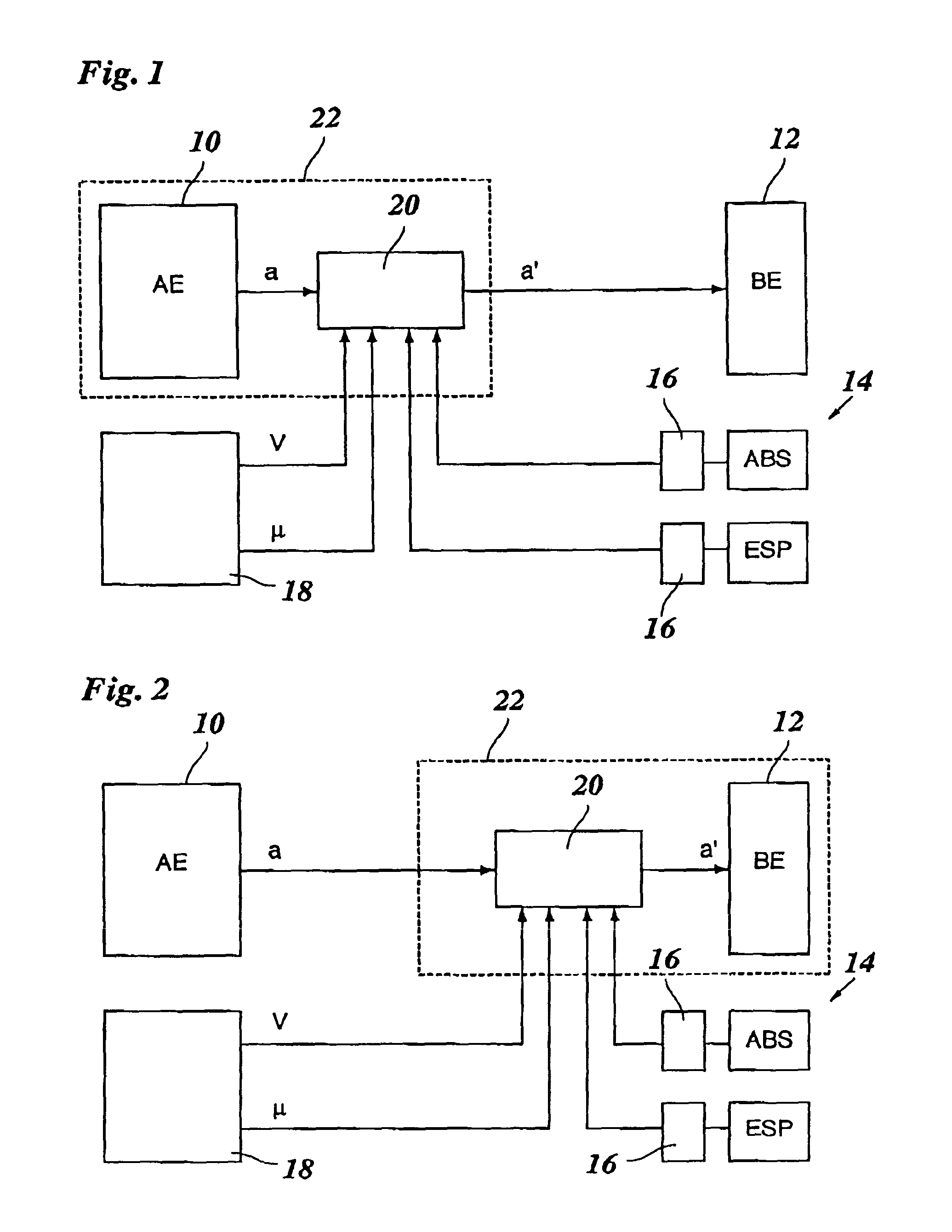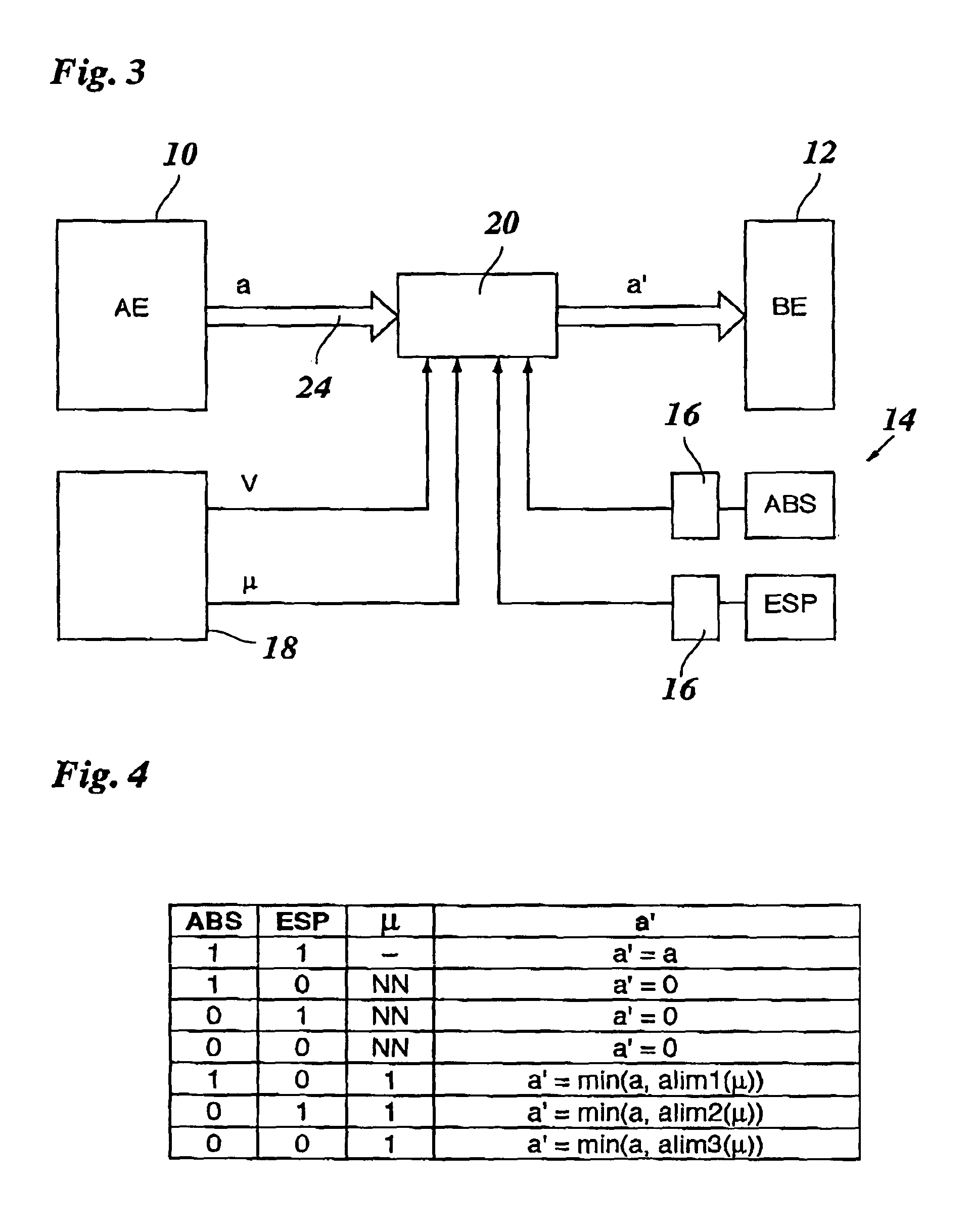Brake control system for motor vehicles
a technology for controlling systems and brakes, applied in brake control systems, brake components, brake systems, etc., can solve the problems that the driver is generally unable to influence or override the actions of these stability systems, and achieve the effect of ensuring the stability of the vehicl
- Summary
- Abstract
- Description
- Claims
- Application Information
AI Technical Summary
Benefits of technology
Problems solved by technology
Method used
Image
Examples
Embodiment Construction
[0013]The brake control system shown in FIG. 1 includes a triggering unit 10 and a braking unit 12 as main components. These units may be separate hardware components, or different program modules of an integrated electronic data-processing device. Triggering unit 10 may be formed, for instance, by an ACC system or any other assistance system which is able to intervene in the brake system of the vehicle, and to this end, to output a braking demand “a” to braking unit 12. Braking unit 12 then controls the braking force at the wheels of the vehicle according to this braking demand a. Braking demand a is thus a signal which quantitatively indicates the intensity of the braking intervention, e.g., in the form of a setpoint braking deceleration, a setpoint braking pressure or the like.
[0014]Also belonging to the brake control system is a stability system 14 which, in the example shown, includes two electronic regulating devices, ABS (anti-lock braking system) and ESP (electronic stabilit...
PUM
 Login to View More
Login to View More Abstract
Description
Claims
Application Information
 Login to View More
Login to View More - R&D
- Intellectual Property
- Life Sciences
- Materials
- Tech Scout
- Unparalleled Data Quality
- Higher Quality Content
- 60% Fewer Hallucinations
Browse by: Latest US Patents, China's latest patents, Technical Efficacy Thesaurus, Application Domain, Technology Topic, Popular Technical Reports.
© 2025 PatSnap. All rights reserved.Legal|Privacy policy|Modern Slavery Act Transparency Statement|Sitemap|About US| Contact US: help@patsnap.com



